The winning percentage is often considered as an indicator to measure trading performance. But, it is important to know the ideal winning percentage in forex trading before making an evaluation of a trading system.
Nearly every trader enters the currency market hoping to earn massive gains. It is crucial to also acknowledge that risk and loss are two inevitable things that commonly occur in forex trading, even for professional traders. Therefore, successful trading does not necessarily mean lots of profits with no losses, but how we can manage our trades so that the potential profits can be greater than the losses. Such thinking sparks a question: How much is the ideal winning percentage in forex trading?
It is commonly believed among traders that in a good money management strategy, having a high winning rate will get you huge profits. At first glance, such common advice seems to be logical. However, if we look closer at the connection between profit and loss in forex trading, it is clear that this simple idea is not completely true.
The Truth about Winning Percentage
When it comes to winning percentage, it basically talks about the number of profitable trades that are divided by the total number of trades. For example, if a trader profits 4 times from 5 trades, then the winning percentage is 80%.
Between a 50% and 90% winning rate, you will naturally think that the 90% winning rate is much better than 50%. But that does not necessarily true because what really matters, in the end, is the real value of each trade, not just the winning rate.
While that could make your trading performance look good, the truth is that the winning percentage does not have any significance on its own. It does not determine how efficient your trading is or how good you are as a trader. In fact, it is possible to have an 80% winning rate but still lose money in the end. In contrast, it is also possible to be profitable with only a 30% winning rate if you know how to make a profit efficiently and cut your losses short. But how can that be?
Take a look at the example below:
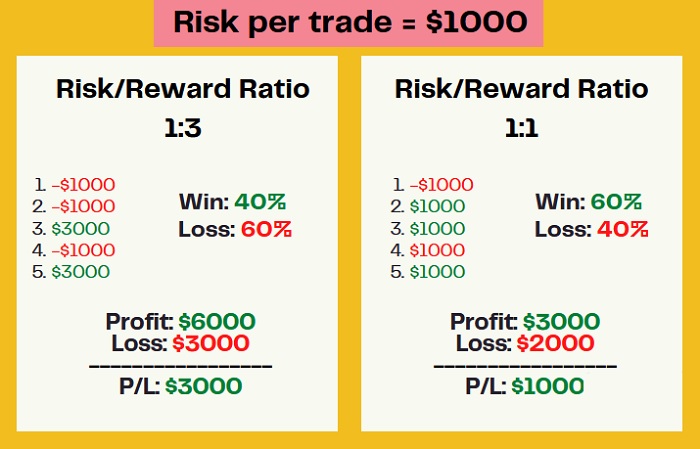
Based on the two examples above, we can see that a strategy with a 1:5 risk/reward ratio ends up getting profit with only a 30% winning rate. On the other hand, the other strategy ends up losing even with an 80% winning percentage because the risk to reward ratio is too small, only 1:1. So, in the end, we know that winning percentage does not determine how much profit you'll end up getting. Instead, you should pay attention to the risk to reward ratio of your trade.
See Also:
The Ideal Winning Percentage
Now that you know winning percentage actually has little significance to your profitability, you shouldn't build your strategy on it. It's better to put your focus on the average risk-to-reward ratio instead. This is one of the most vital management skills to develop in forex trading as it can determine your actual profitability. It helps you to know where to place your stops and exits logically. So it would be best if you properly plan this out before you start trading.
The standard average risk-to-reward ratio is 1:2, which means that the value of each profit you get is twice bigger than the amount of each loss. What you need to master is to manage your losses relative to your wins. If you can consistently make more profit than loss, then you can still make a steady income. In this case, there's a simple mathematical formula that can determine the minimum winning percentage you need to make a profit:
Minimum Win Rate (%) = Risk ÷ (Risk + Reward) x 100
So let's say you set your risk-to-reward ratio of 1:2, then you only need to win 33% of your trades to break even. Exceed that win rate and you will be getting money.
1 ÷ (1 + 2) x 100 = 33%
Based on that formula, we can conclude that the higher your risk-to-reward ratio, the smaller your winning percentage needs to be. But it is also worth noting that a high risk/reward ratio is never easy to implement, so you should balance your strategy and try out different combinations to find the one that you're comfortable with.
A Singaporean trader, Rayner Teo, introduced a very useful formula that could calculate your expected average return based on your previous trades and winning percentage. You can also say that it shows you the expectancy level of your trade. Knowing the expectancy of the trade will help you to predict the direction of your trade, whether it's going in the positive (profitable) way, negative (loss), or break even. The formula is as follows:
Expectancy = ((1 + Average Win ÷ Average Loss)) x Win Rate - 1
Now let's try to imagine a realistic scenario and use the formulas to calculate the most possible outcome of the trade.
Winning Rate = (Winners ÷ Total Trade) x 100
Winning Rate = (15 ÷ 50) x 100
Winning Rate = 30%
Average Win = 2%
Average Loss = 1%
Minimum Winning Rate = Risk ÷ (Risk + Reward) x 100
Minimum Winning Rate = 1 ÷ (1 + 2) x 100
Minimum Winning Rate = 33%
Expectancy = ((1 + (Average Win ÷ Average Loss)) x Win Rate) - 1
Expectancy = ((1 + (2 ÷ 1)) x 0.30) - 1
Expectancy = 0.9 - 1
Expectancy = -0.1%
Based on the example above, the expectancy is negative, which means that for every 1% risk over the long term you can expect to lose an average of -0.1% of your trade. While the formulas are quite simple, it is definitely useful to manage your risk. As long as you keep the expectancy level positive and you exceed your minimum winning percentage, then you can relax a bit. Keep trading and trust your plan, you will eventually get return consistently as you expected.
The Psychology of Losing
Even if we already know the theory that with a high risk-to-reward ratio we only have to win a few times and should not stress on the losses so much, the chance that you're not going to be affected by the idea is slim.
The reason is that human brains have a certain loss tolerance. If we take trading as a game, then the human brain can only handle a certain number of losses before they end up losing their confidence and patience to continue.
Challenge is another thing that humans are attracted to. If it feels like the trading becomes stagnant and they lose most of the time, then the challenge is not there anymore so traders can lose interest. It discourages them to keep trying and it's hard to develop confidence out of it. As a result, it is possible that traders bailout or doesn't stick to the initial risk/reward ratio to pursue a higher winning percentage.
See Also:
It is important to note that the loss tolerance for each person is different. So take a good look at yourself and be honest. By trying a variety of strategies, you will eventually figure out your personal tolerance that makes you comfortable with your trading. If you set your risk/reward ratio too high and you end up getting more losses than you can psychologically endure, then it is not suitable for you. So keep that in mind when you build your trading strategy.
Plan Beforehand
It is important to lay out your plan before you actually enter the market and trade. While it is true that forex trading requires a lot of practice and it's common to experience errors in the process, make sure that every decision you make is based on logic. That is why after building a trading strategy, you should stay consistent with it so you know for sure if the strategy really works or not. It would be best to try your strategies in a forex demo account so you can test it out without risking any money. Once you feel certain and comfortable with it, then you can try it with real money.
Focus on Your Risk/Reward Ratio
When determining risk and reward, traders often make the mistake of determining the reward before the risk, or setting a stop loss level that is too close to the entry level. This causes the strategy to not work well. The first thing a smart trader does would be to calculate the amount of risk that they can handle. By determining the risk in advance, they will focus more on the risk, which in return will save them from unbearable losses. Basically, the commonly used ratio is 1:2, but every trader can adjust it to the amount of money they're about to invest in.
From the explanation above, we've learned that the winning percentage actually has no significance to the outcome of our trade. Focusing only on increasing our winning rate won't take us anywhere and even potentially ruin our accounts. The goal that we should have in mind is to manage our risk/reward ratio and calculate the expectancy of our trade so we can get more profit than loss. Keep in mind that forex trading is not the same as gambling, so even if the market is volatile and unpredictable, we still need a proper calculation and trading strategy to succeed.

 Dedicated FREE FOREX VPS
Dedicated FREE FOREX VPS Free FOREX Virtual Private Server
Free FOREX Virtual Private Server MT4 Demo Contest, Get $500
MT4 Demo Contest, Get $500 Sign Up for an Account, Claim 60% Deposit Bonus
Sign Up for an Account, Claim 60% Deposit Bonus Free MT4/MT5 VPS 2024
Free MT4/MT5 VPS 2024 Send E-mail and Get Free Merchandise
Send E-mail and Get Free Merchandise $1K Refer a Friend Bonus for Pepperstone Pro clients
$1K Refer a Friend Bonus for Pepperstone Pro clients Maximize Your Earnings with 100% Deposit bonus
Maximize Your Earnings with 100% Deposit bonus Trade to Win, $5,000 Monthly Demo Contest
Trade to Win, $5,000 Monthly Demo Contest Claim 30% + 15% Deposit Bonus from LiteFinance
Claim 30% + 15% Deposit Bonus from LiteFinance
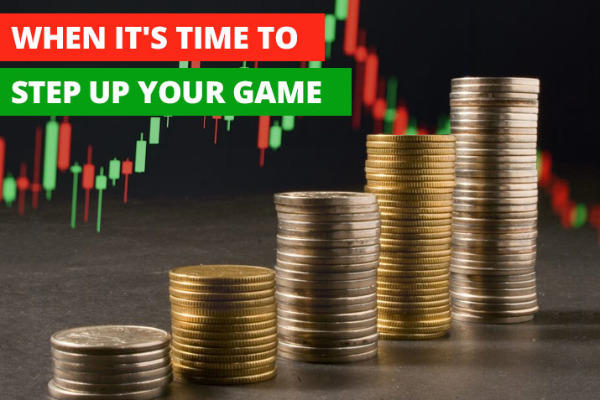
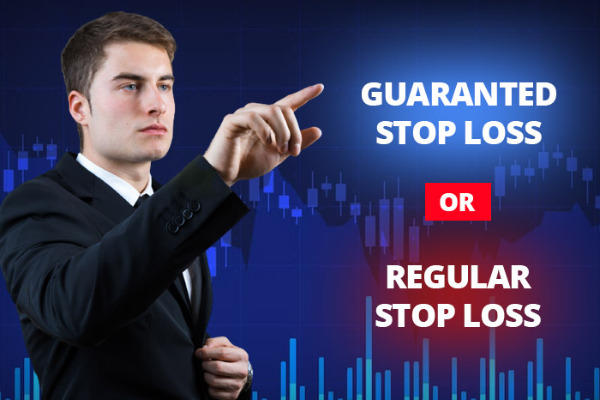
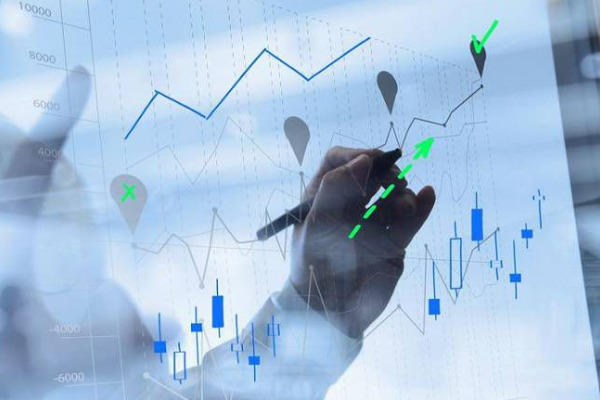
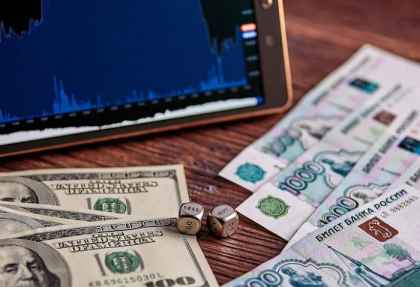
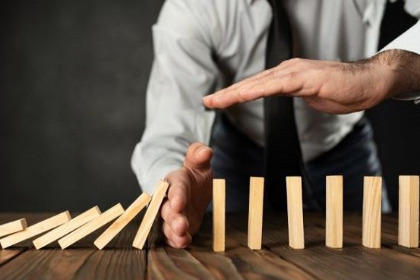

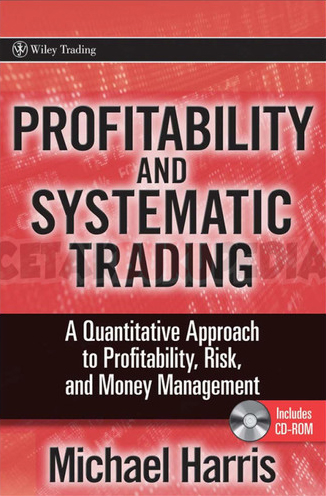

1 Comment
Harvey Johanson
Nov 21 2022